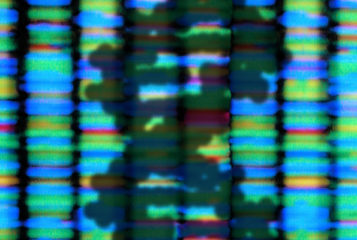Scientists say they have identified a gene that could explain why some people appear to look younger than they are.
The study, published in Current Biology, assessed the faces of 2693 elderly Dutch people to determine how old they looked. Their 'perceived age' was then compared to their real age. The participants had all provided DNA along with pictures of themselves for the Rotterdam study.
Results of genome analysis showed that the participants who carried variants of a gene known for producing red hair and pale skin, MC1R, looked on average two years older than their real age. This finding was confirmed when the test was repeated in two other European populations.
'For the first time, a gene has been found that explains in part why some people look older and others younger for their age,' said Professor Manfred Kayser of Erasmus MC University Medical Center Rotterdam in the Netherlands.
MC1R (melanocyte-stimulating hormone receptor) is a pigmentation gene already known to be involved with UV protection. However, the researchers claim to have separated the gene's known effects on pigmentation and sun sensitivity, and say that mutations in this gene can have independent ageing effects.
They point out that perceived age has already been shown to correlate with telomere length, reflecting biological age, and can even predict health and mortality. A large number of environmental factors are also already proven to aid facial ageing, such as smoking, stress, and high blood sugar.
'We believe that using the perception of age is one of the best and most exciting ways to measure how "well" people are ageing, which we hope will lead to further breakthroughs in ageing and health research in the near future,' said Dr David Gunn, a study author and senior scientist at Unilever, which part funded the study.
The study also revealed that women were consistently rated older than their chronological age, and men younger, a finding that could reflect an obsession with young women in the media, one commentator told the Guardian.
Another correction the researchers had to make was to adjust their data to account for skin tone, since MC1R is involved in pale skin tones. However, having ruled out skin tone, the team could not explain how MC1R has an effect on ageing.
Professor Ian Jackson, from the UK Medical Research Council's Human Genetics Unit, told BBC News: 'MC1R is the major gene involved in red hair and pale skin, and what they're trying to say is it's got an impact on making you look slightly younger that isn't to do with paler skin, but I'm not so sure… The question is how well are they adjusting for that.'
More research is planned, but Dr Gunn hopes it will lead to a product to make people look younger. 'This is the first genetic study ever of perceived age. Ideally we'd want something to boost this gene for everybody,' he told the BBC News.




Leave a Reply
You must be logged in to post a comment.